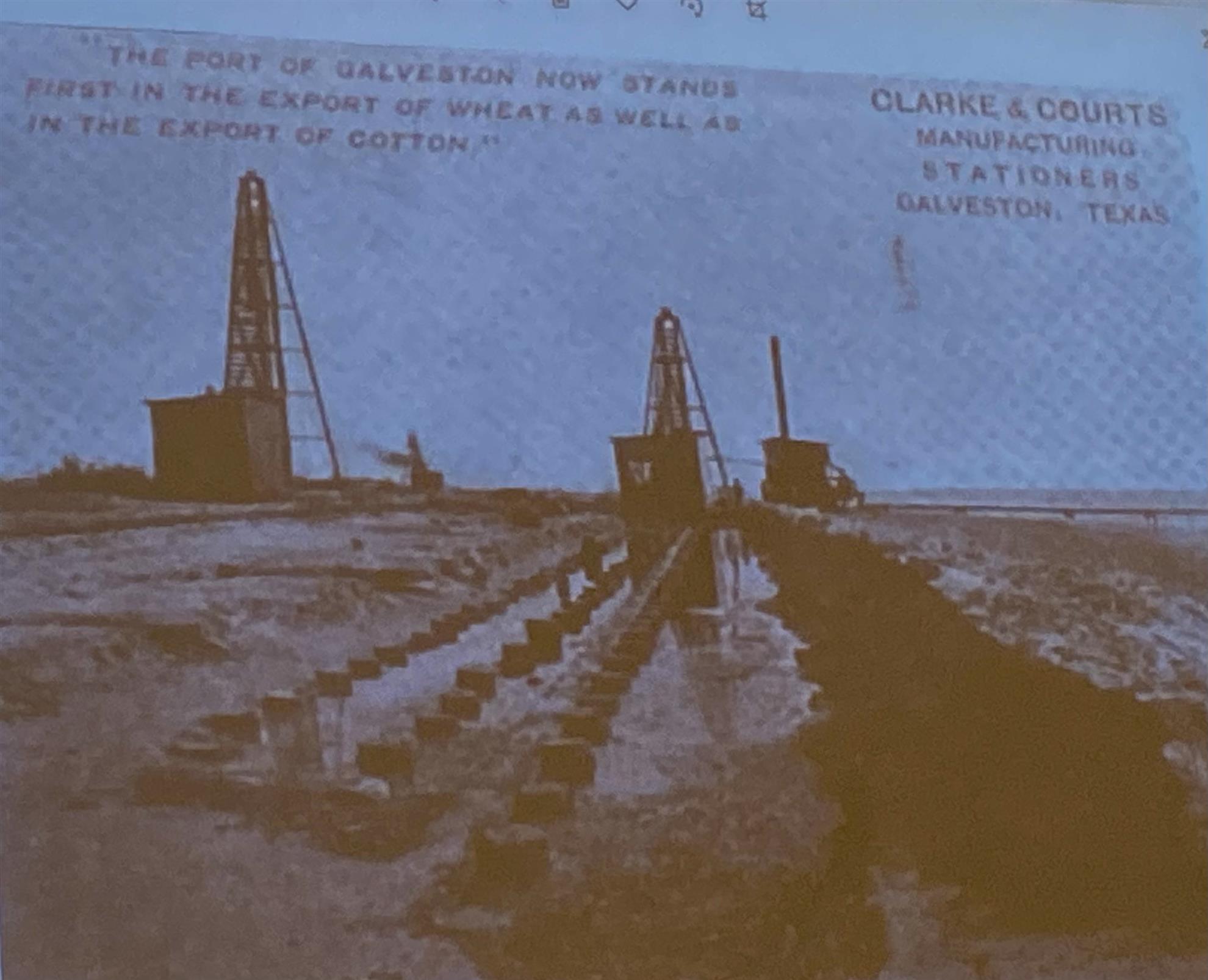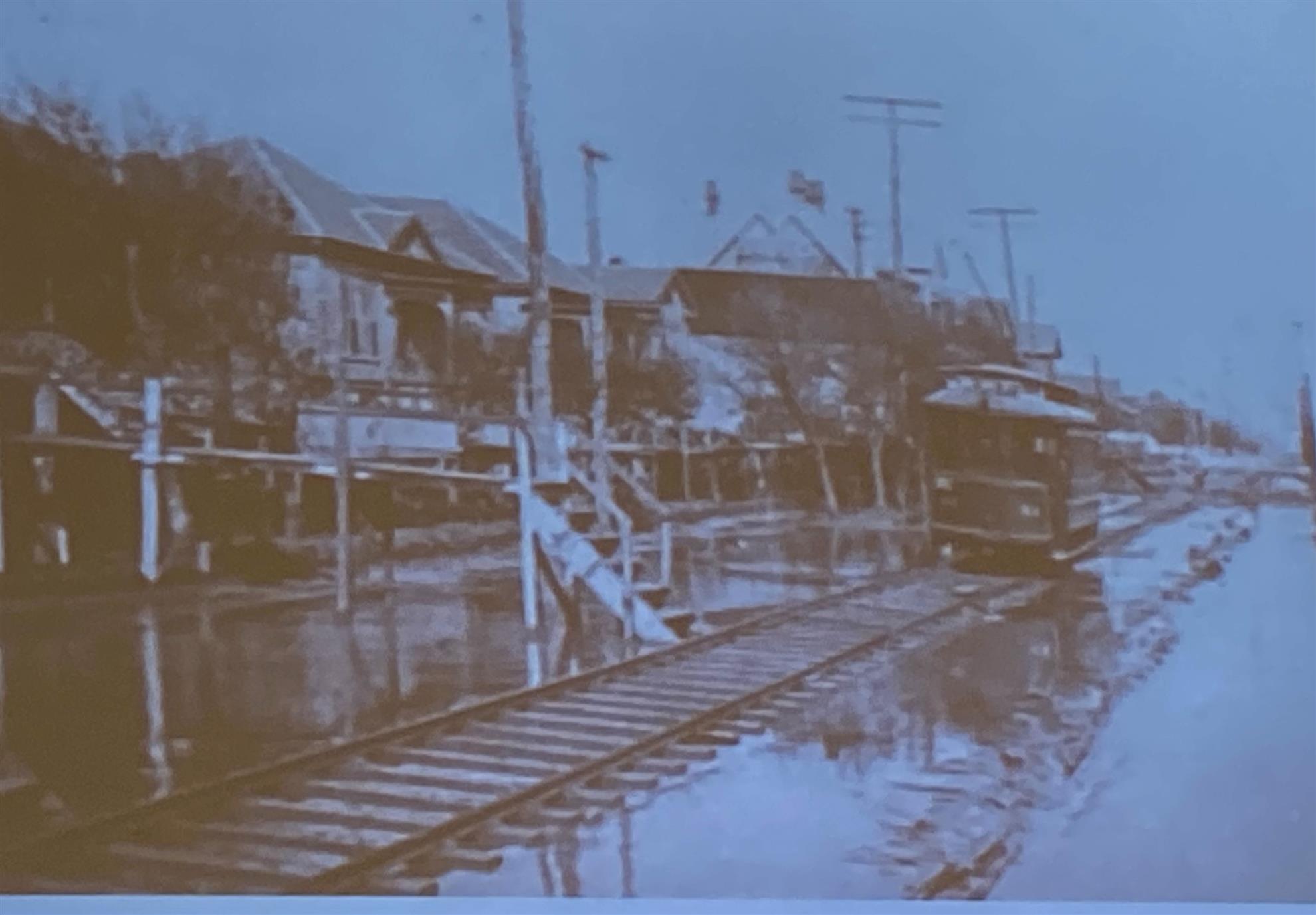

Clint Morse introduces our guest Chuck Chandler
Chuck is a member of the Harris county historical commission.
Chuck went to Texas A &M and plays the banjo & fiddle.
Hurricanes were not named until 1951. Before this time they we named by the year or an event during the storm.

In the early days there was two bayous on the island.
This map is 1845.
The first storm that was recorded was in 1527
see https://en.wikipedia.org/wiki/Narv%C3%A1ez_expedition
Álvar Núñez Cabeza de Vaca, was on board and roamed the southwest for 10 years.
1818 another hurricane hit not to bad.
1837 a big one hit the island. It is known as Racer's hurricane, from the Royal Navy ship HMS Racer. Winds knocked building off foundations. 16 foot tidal surge, rained for 36 hours.
see https://en.wikipedia.org/wiki/Racer%27s_hurricane for more information. Another hits five years later.
1854 hurricane has winds up to 105 MPH and 8 foot storm surge.
1867 with a population of 15,000 it was noted 1,200 died of yellow fever.
18" of water in the Strand area, The rail road bridge was knocked out and tidal surge highest since 1937.
1871 there was 3 ft of water inside the Railroad station. Locals voted to raise sidewalks in downtown area. They are still like this today. When it rained real hard the streets looked like Venice. Completed in 1874.

Picture taken 1875 before storm.
1875 Indianola hurricane. Surge was 4 foot higher than high tide. Boats were found 9 miles inland. 800 people lost their lives with 300 being from Indianola. At this time Indianola was a lager port than Galveston. Rain was 10.58" and flats were developed. It was most destructive. The town would be rebuilt, only to be devastated again by the 1886 hurricane. At Galveston, several houses and a railroad bridge were destroyed, and a ship, the Beardstown, sunk in Galveston Bay. The town suffered about $4 million in damage and 30 deaths.
1886 hurricane destroyed Indianola. In Galveston, Texas, the storm capsized a forty-ton schooner, the Liviona Perkins, killing three crew members. The storm also damaged roads, railways, and houses, leading to an estimated $200,000 in damage (equivalent to $5.2 million in 2019[7]).[6]After this hurricane they formed the Seawall Protection group. But politics and money delayed
anything getting done.
1900 hurricane
15 foot over high tide
100 to 120 mph winds before wind gauge blew away.
Deaths 8 to 12 thousand.

All the greyed area was destroyed what saved downtown area was the tide pushed the debris into large piles that stopped the surge from getting there.








And then the building of the wall and raising the city starts.
https://www.swg.usace.army.mil/Portals/26/docs/PAO/GalvestonBulwarkAgainsttheSea.pdf
The wall was built 17 ft tall. So the rest of Galveston had to be raised to 17 feet. The government helps with the wall but the property owner was responsible for raising there own house.





Before the ground was raised they built steps so to catch the train.
They started the wall in 1905.
In 1889 President Grover Cleveland appointed him to a board of engineers to recommend a western Gulf port for the government to develop to handle tonnage that was increasing each year. Robert selected Galveston as the only site that could meet the conditions to become a major Gulf port. Congress approved his proposal and appropriated the funds. After the Galveston hurricane of 1900 Robert served as consulting chairman of the board of engineers to design means of protection against future tidal waves. The recommendations of this board resulted in a seawall that successfully saved the city of Galveston on two subsequent occasions, 1909 and 1915. After each tidal wave Robert was called back to report on seawall damage and to make further recommendations. He was also asked to help design a highway and railroad bridge between Galveston and the mainland. Just before he reached retirement age he was promoted to brigadier general, chief of engineers, United States Army, on April 30, 1901
Robert also became this country's leading parliamentarian. Robert's Rules of Order, first published in February 1876, remained in print in the 1990s as an authoritative reference work on parliamentary procedure.
They started by driving cedar logs down to bedrock with pile drivers.
Then poring cement. They completed 3 miles. They did complete another 7 miles so its today 10 miles




